It’s a fact – mid-size companies can’t afford reactive, siloed IT. But they often face a big question: what does a mature, effective IT strategy look like?
An IT strategy is not a shopping list of software and hardware. It’s a structured framework that aligns technology with business goals, reduces risk and creates a foundation for growth. Below are the core components every mid-size company needs and why each one matters.
Read: Aligning IT with Business Strategy: The Mid-Size Advantage
1. Cybersecurity as a Foundation, Not an Afterthought
Cybersecurity is no longer optional. Mid-size firms are attractive targets because they frequently lack enterprise-grade defenses while facing rising regulatory and customer expectations. For example, a construction firm bidding on federal work must demonstrate security maturity, and a law firm protecting client data faces reputational and legal risk if gaps exist.
A mature IT strategy embeds security across the organization. That includes:
– Frameworks and policies: Adopt standards such as NIST or CMMC to guide practices.
– Continuous monitoring: Detect threats in real time rather than responding after an incident.
– User training: Employees are the first line of defense, so ongoing education reduces human error.
– Incident response plans: Have clear protocols for how to act when an incident occurs.
2. Scalable Infrastructure to Support Growth
Growth demands flexibility. Whether opening new offices, hiring rapidly or increasing production, IT must scale without creating bottlenecks. Without scalability, employees wait for access, customers experience delays, and competitors gain an edge.
Key elements include:
– Cloud and hybrid solutions: Environments that expand as demand grows.
– Standardized tools: A consistent platform set to avoid duplication and simplify support.
– Automated provisioning: Fast, secure onboarding for users, devices and sites.
– Resilient networks: Redundancy and capacity to handle increased loads.
3. Proactive IT Management
Reactive IT fixes problems after they happen; proactive IT prevents business impact. This shift reduces downtime and the hidden costs of lost productivity.
Proactive management should include:
– 24/7 monitoring: Spot anomalies before they cause outages.
– Patch and update management: Keep systems current and secure.
– Capacity planning: Forecast needs so the business doesn’t hit a wall.
– Health standards: Define what “good” looks like and maintain it consistently.
4. Governance and Standards for Consistency
Discipline is essential. Without governance, every hire, project or vendor adds risk and inconsistency. Governance makes work repeatable so different people can achieve the same outcomes.
Governance covers:
– Documented processes: SOPs for onboarding, changes and projects.
– Technology standards: Approved tools and vendors to reduce sprawl.
– Change management: Communicate changes so employees understand impact and expectations.
– Audit and compliance: Regular checks to ensure internal and external standards are met.
5. Measurable KPIs to Ensure Accountability
Executives rely on metrics for decisions; IT should be treated the same. KPIs turn IT from a black box into a measurable contributor to business goals.
Useful KPIs include:
– System uptime: Are critical systems available when needed?
– Project delivery rates: Are initiatives on time and on budget?
– User satisfaction: Does technology enable employees to perform their best?
– Security posture: Are vulnerabilities decreasing over time?
– ROI: Are technology investments delivering financial or strategic returns?
6. Executive-Level Leadership
All of this needs guidance at the executive level. A CIO or Fractional CIO ensures IT initiatives align with the business plan. Without leadership, tools and processes don’t translate into outcomes.
This role provides:
– Strategic planning rather than ad-hoc decisions
– Vendor management focused on business outcomes
– Clear communication to keep executives aligned
– An evolving roadmap that adapts as needs change
From IT as Overhead to IT as Advantage
If one component is missing, cracks form: cybersecurity without governance leaves gaps; scalable infrastructure without proactive management creates chaos; KPIs without leadership fail to drive action. Align IT with business goals to guarantee these components work together.
Cytranet can help. We combine proactive IT management, Fractional CIO services and cybersecurity to ensure your IT delivers measurable results. Request a consultation today, and check out our next blog on the role of executive-level IT leadership.


